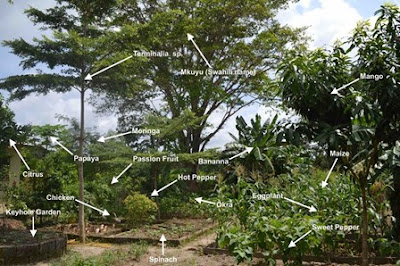PDC LESSON 7.21 WORM FARMING – COMPOST WORMS
PERMACULTURE COURSE
WORM FARMING – COMPOST WORMS
Compost Worms
It has been
estimated that one teaspoon full of vermicast has up to four billion bacteria
whose life cycles interweave with countless protozoa, fungi, worms and many
other creatures. These all form the web of soil life that is the basis of plant
vitality.
Also~
There are 5 – 10
times more available plant nutrients in vermicast than there is in compost or
soil.
·
Vermicast is
deemed to be pathogen free.
·
Composting with
worms takes less time than composting.
The types of worms
used for compost worm farms are of a specific type. These are the tiger worm
(eisenia fetida), red worm (lumbicus rubellus), and the red tiger worm (eisenia
andrei) and the African night crawler.
The reason for
this is that earth worms can’t easily be held in captivity, and they tend to go
deeper down into the soil. The compost worms are by nature surface dwellers.
They do need particular attention though to thrive and multiply. Therefore the
compost worms generally won’t survive in the open garden situation such as earth
worms do. Compost worms are not native to Australia so don’t expect to have
them thrive for any length of time outside of their ideal conditions.
Compost worms need a confined container that will retain its moisture. The worm farm needs to be sited in such a way that is out of direct sunlight and in a shaded position, preferably with a southerly breeze around and under it. Moisture needs to be kept up to them and they need a constant supply of food.
Text from the roots, Elisabeth Ferkonia (Aus.) PDC studied with Bill Mollison,



Comments
Post a Comment